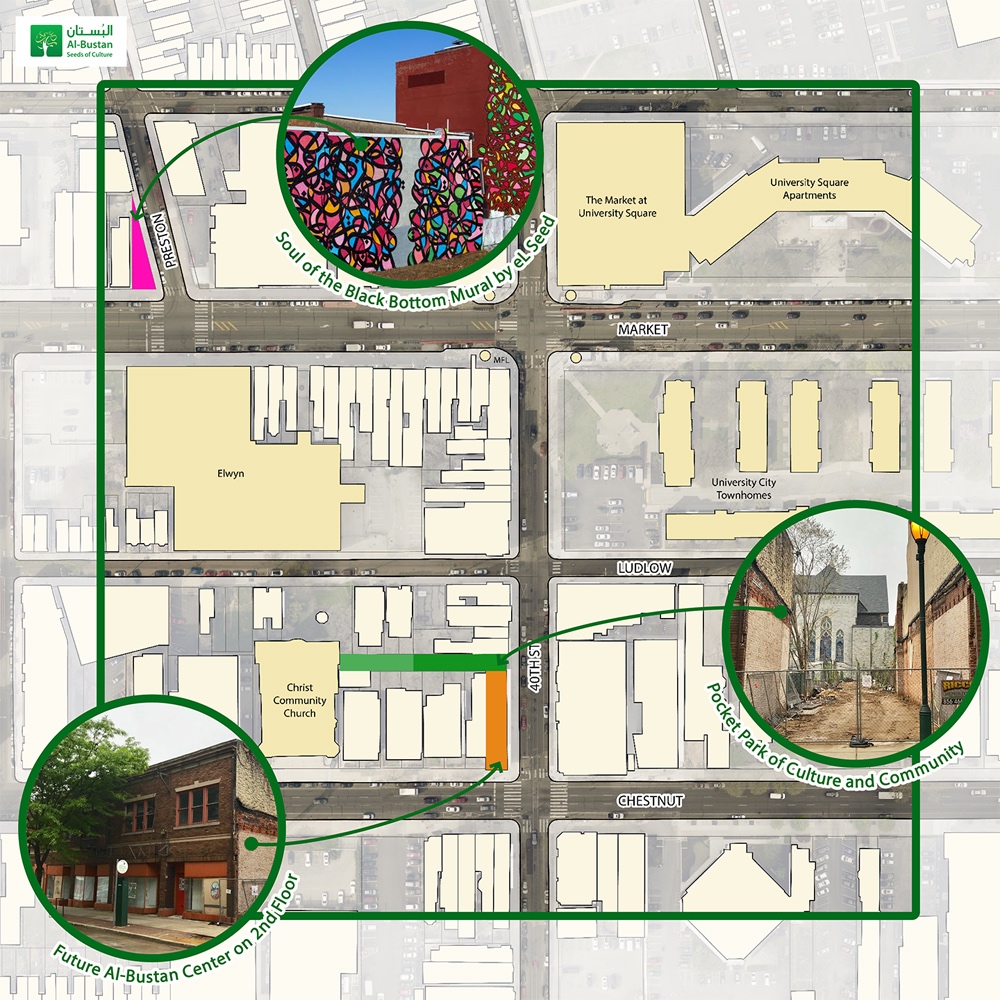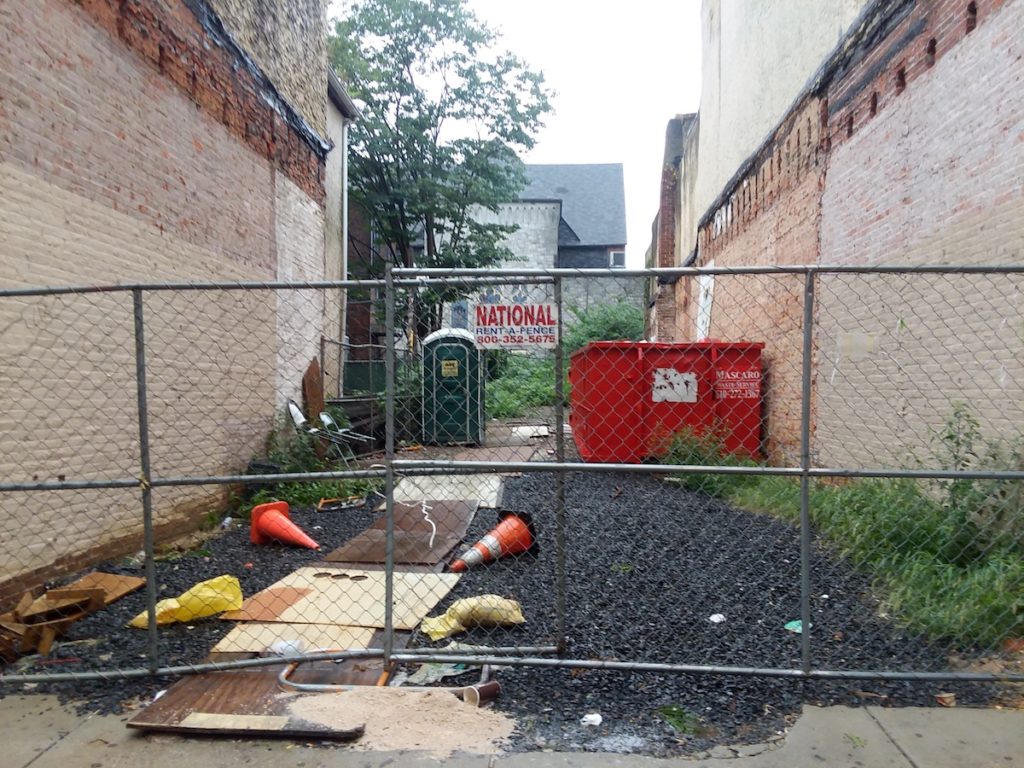Al-Bustan is growing a pocket park on 40th Street with the help of a diverse community
 September 19, 2018
Category: Feature, Featured, Long, Method
September 19, 2018
Category: Feature, Featured, Long, Method
If you find yourself walking along 40th Street between Ludlow and Chestnut with your eyes glued to the ground, ears closed off to the sounds of the street, your surroundings a blur, you probably aren’t alone.
Awakening people’s senses to their surroundings isn’t always the easiest task, but Arab arts nonprofit Al-Bustan Seeds of Culture wants to grab your attention as you walk down that path and transport you into a completely different space with a pocket park that is quietly stuck in the midst of it all.
Al-Bustan, a West Philadelphia-based nonprofit led by Executive Director Hazami Sayed, has big dreams of the park becoming a space where talks of diversity and dreams of it become reality, and while the plans are still in early stages, steps are being taken to ensure its goals — public events, cultural programming, art making in a welcoming and inviting space for everyone and anyone — are being intentionally met.
The pocket park to-be is now an empty space nestled between two buildings at the entrance, with a few other buildings on the side. The lot is 200 feet in depth and ends at a church wall. Lined up along the empty lot are different fences belonging to its neighbors.
The lot is own by developer UC West, which planned for the spot to be used as a public space, so Al-Bustan stepped in and took the lead in guiding the direction of the empty lot’s transformation into a public space via community outreach and visioning.
Sayed said during a recent tour of the space that her organization’s ideas for the park are inspired by the idea of coexistence, or convivencia, from the Andalusian Islamic era in Southern Spain. The team has been brainstorming about how they could bring ideas from that era into West Philly — “the concept of coexistence and bringing and sharing of cultures and food.”
Choosing this particular spot as the location to bring an idea to life wasn’t a coincidence, Sayed said. For one, Al-Bustan’s headquarters is also moving to the second floor of a building next to the lot. But in the broader community the lot had been eyed for a while, and for good reason.
40th street is a street of change, and it’s change one can see. If you stand at the lot and look out, for example, you can see high-rise apartments for young University of Pennsylvania students and a senior living development. There is diversity in race, socioeconomics and age, and the differences present in the community did not slip past project leaders.
In creating a space that could also be an intersection of growth, change and diversity, Al-Bustan tapped West Philly-based landscape architects Anu Mathur, Dilip da Cunha and Prakul Pottapu to help.
The space is meant to be for the public, and forums have been hosted for community members at the space and at The Rotunda nearby to discuss ideas and thoughts for the park with the designers. The forums have led to thoughtful and fruitful conversations about the design, Mathur said, which is important to her.
As designers, “we don’t only respond to what people are saying. We propose things to which they can then build on further,” she said.
Mathur said that when she saw the lot, she couldn’t help but find excitement in the challenge of the project — including the size of the lot itself. Typically, long lots are passage ways that lead to somewhere else, she explained. But this lot is a dead end that is next to different buildings and has multiple fences on the side. To some, the fences are inconsistencies, but to these project leaders, it was another way to embrace diversity.
Another challenge of the lot is its shape, because it’s a linear path, Mathur and Sayed said. One possible solution is to build tables that line down the middle of the lot.
“Typically, if you think of a site so narrow, you put seating on the edges,” Mathur said. “The middle will just be a corridor for walking, and it doesn’t even give you a sense of comfort. And so even if it seems that by putting this line in the middle we are filling up the space, we felt it’s the kind of line that will actually gather” instead of dividing people.
At one of the forums, it was brought to Mather and Sayed’s attention that people celebrate cultures — theirs and others — through food. But not every culture eats at the same height, so the designers proposed the idea of installing movable tables that can be adjusted so visitors have the choice of eating at any height that fits them. Perhaps the tables could even be flattened out to the ground for events and performances.
These aren’t the only ideas that are being brewed for the park, but the intentionality in allowing many voices to be heard throughout the process as well as the goal of building a public space that can be a melting pot of diversity and growth of a community is something to keep an eye out for.
Another public planning forum will be planned for late September or early October, and a crowdfunding campaign is currently raising money for the park’s development.
Trending News











